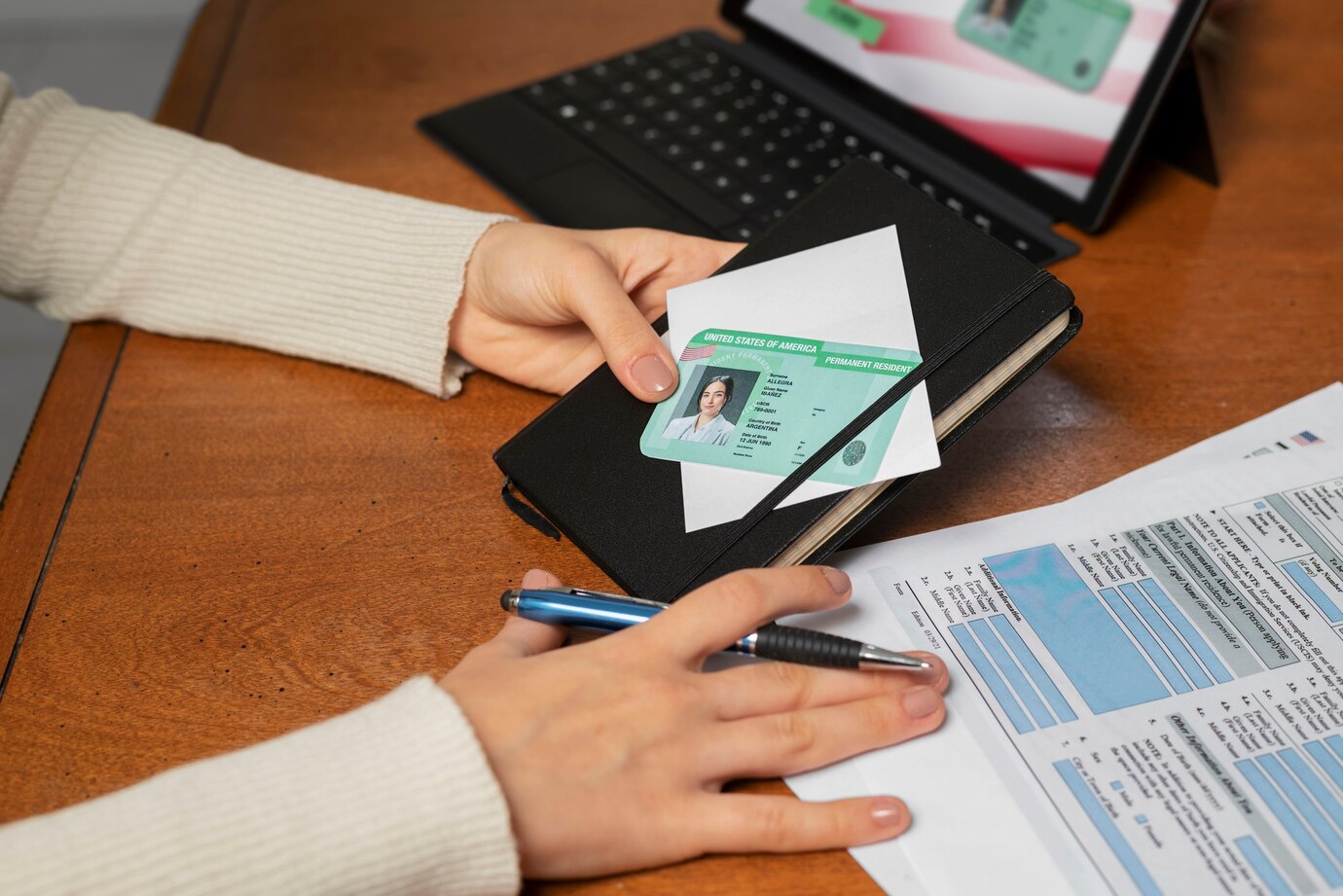The gateway to a new world often sits within a tiny frame: the visa photo. Beyond its seemingly simple purpose of identification, lies a complex set of technical specifications that hold profound consequences. Understanding these requirements transcends mere pixel dimensions and color balance, venturing into the realms of facial recognition algorithms, international standards, and even political anxieties about security and identity. This paper delves into the intricate tapestry of technical demands woven across various countries and visa types, exposing the hidden mechanisms that govern our entry into different realms.
Background Information
Visa photos have emerged as a critical element in the modern immigration landscape, playing a pivotal role in identity verification and security protocols. Historically, the use of photographs in identification documents dates back to the late 19th century. However, the formalization of standardized visa photo requirements gained prominence in the latter half of the 20th century.
The advent of global travel and increased migration necessitated a standardized approach to visa photo regulations. Prior to the establishment of comprehensive standards, variations in photo formats and quality across different countries posed challenges for immigration authorities. Recognizing the need for consistency, international organizations began developing guidelines to ensure uniformity in visa photo specifications.
Over time, the rise of terrorism and identity fraud further underscored the importance of accurate identification in immigration processes. This prompted a shift from traditional, paper-based visa documentation to electronic systems that leverage advanced technologies, including biometrics. Consequently, understanding the historical evolution of visa photo requirements provides context for the contemporary need to balance security concerns with the facilitation of legitimate travel.
In recent years, the digital revolution has transformed the way visa photos are captured, stored, and transmitted. The shift to digital formats has not only enhanced the efficiency of visa processing systems but has also raised new challenges related to data security and privacy. As we navigate the intricacies of modern visa photo requirements, it is crucial to recognize the dynamic interplay between historical context, technological advancements, and the evolving nature of global migration. This understanding forms the foundation for a comprehensive exploration of the technical requirements associated with visa photos.
Regulatory Framework
The regulatory framework governing visa photos is a complex tapestry woven by international, regional, and national entities. At the global level, the International Civil Aviation Organization (ICAO) has played a central role in establishing standards for machine-readable travel documents, including specifications for visa photos. The ICAO’s Document 9303, also known as the Machine Readable Travel Documents (MRTD) standard, sets forth guidelines for biometric data, including facial images, to enhance the interoperability of travel documents.
However, while international standards provide a broad framework, individual countries and regions have the autonomy to refine and adapt these guidelines to suit their specific needs. Regional organizations, such as the European Union with its Schengen Area, have implemented additional requirements to address specific security and immigration concerns.
At the national level, governments enact legislation and regulations that dictate the precise technical specifications for visa photos. These regulations often include details such as acceptable background colors, dimensions of the photograph, resolution, and file format. National regulatory bodies collaborate with immigration agencies and technology experts to update and fine-tune these specifications to keep pace with technological advancements and emerging security threats.
The harmonization of visa photo requirements across borders remains a challenge, given the diversity of national and regional regulations. Efforts are ongoing to align these standards to facilitate smoother international travel, but the intricacies of sovereignty and security considerations continue to influence the regulatory landscape.
Understanding the regulatory framework is essential for visa applicants, as non-compliance with these standards can lead to processing delays or even visa denials. Additionally, for photo studios and immigration authorities, a clear grasp of the regulatory landscape is crucial for ensuring that the visa application process remains robust and secure while promoting the facilitation of legitimate travel across borders.
Technical Specifications
The technical specifications for visa photos encompass a range of parameters that ensure uniformity and accuracy in the capture and processing of images. These specifications are designed to facilitate automated processing, enhance security, and maintain consistency across diverse immigration systems. Key technical aspects include:
- Image Resolution: Visa photo requirements typically stipulate a minimum resolution to ensure clarity and detail in facial features. Common resolutions include 300 dots per inch (dpi) or higher, ensuring that the image retains sufficient quality for facial recognition and manual inspection.
- Background Color: A uniform background color is mandated to simplify image processing and isolate the facial features of the applicant. Neutral colors, such as white or light gray, are commonly specified to minimize distractions and ensure that facial features are clearly distinguishable.
- Dimensions: Specific dimensions for the photograph, such as height and width, are defined to standardize the visual representation of individuals. These dimensions contribute to the consistency required for automated document verification and compatibility with international travel document standards.
- File Format: The file format for visa photos is crucial for compatibility with electronic systems. Common formats include JPEG or PNG, which balance image compression with quality. The choice of format depends on the specific requirements outlined by immigration authorities.
- Printing Quality: In cases where physical copies of visa photos are submitted, guidelines often prescribe minimum printing quality standards. This ensures that hard copies maintain the necessary clarity and detail for manual verification processes.
| Parameter | Specification | Additional Information |
| Image Resolution | 300 dpi or higher | Ensures clarity for facial recognition and manual inspection. |
| Background Color | White or light gray | Provides a neutral backdrop for facial features. |
| Dimensions | Standard height and width | Standardizes visual representation for compatibility. |
| File Format | JPEG or PNG | Balances compression with image quality for electronic systems. |
| Printing Quality | High-resolution print | Maintains clarity for manual verification processes. |
Biometric Requirements
The integration of biometric technology has become a hallmark of modern visa systems, enhancing security measures and bolstering identity verification processes. Biometric requirements for visa photos primarily focus on facial recognition, leveraging distinctive facial features to establish and confirm the identity of the visa applicant. This section will delve into key aspects of biometric requirements:
- Facial Recognition Technology: Facial recognition is a widely adopted biometric modality in the visa application process. This technology analyzes unique facial features, such as the distance between the eyes, nose, and mouth, to create a biometric template that serves as a digital representation of an individual’s identity.
- Alignment and Pose: Biometric standards often specify the required pose and alignment of the face in the visa photo. Direct, full-face captures with the eyes open and clearly visible are commonly mandated. The aim is to ensure consistency in the data collected for biometric analysis.
- Expression and Accessories: Guidelines typically stipulate neutral facial expressions to facilitate accurate facial mapping. Additionally, restrictions on accessories, such as eyeglasses or head coverings, may be imposed to avoid interference with facial recognition algorithms.
- Age Progression Considerations: Biometric systems take into account potential changes in facial features over time. Therefore, biometric requirements may include considerations for age progression, allowing for a certain degree of change between the time of capture and subsequent verifications.
- Data Protection and Privacy: Given the sensitivity of biometric data, regulations often address data protection and privacy concerns. Measures such as encryption, secure storage, and stringent access controls are implemented to safeguard the integrity and confidentiality of biometric information.




